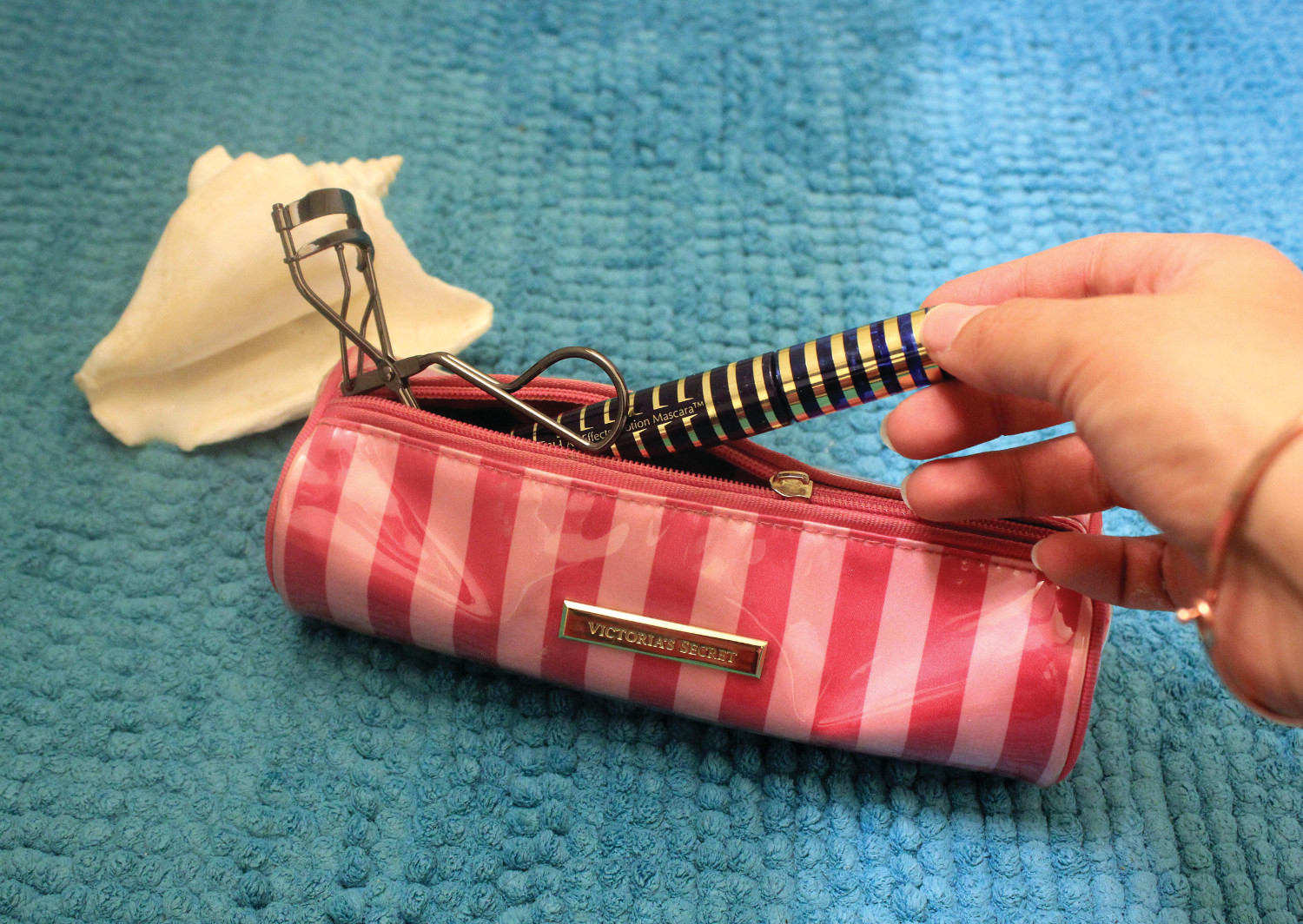Jodie Vanderslot | Health Editor
Featured image: They’re real—kind of. | Basma Elbahnasawy
For many, mascara needs little introduction—but nowadays, our options aren’t limited to simply choosing a mascara. We find that the options of brands and wands are endless: Do you want length or volume? Falsies or natural? Waterproof or smudge-proof?
These formulas and bristles are tailored to suit your desires —in theory. However, application for some is still a timely process, including combing, separating, and curling. Growing in popularity and everyday use are false lashes and eyelash extensions.
Mascara is a cosmetic used to enhance the eyelashes. It may darken, lengthen, and define your lashes, and is available in various forms and formulas. Each bottle is infused with pigments, often carbon black or iron oxide pigment to darken the lashes, a preservative, as well as thickening waxes and oils. A general rule is that it is best to replace your mascara every three months—at this point, the mascara will begin to dry out and flake.
Waterproof or water-resistant mascaras have a lower water content that allows them to last and prevent flaking. However, not every day should be a waterproof day. These formulas are also much more difficult to remove and tend to dry and bind lashes together, often pulling at the root and contributing to lash loss. Alternatively, 3D fiber mascaras deliver a false eyelash effect but more natural, even though it is a more lengthy and temperamental process.
While not necessarily the worst for your health, the risk is always thinning your lashes, irritating your eyes, and scratching your cornea upon application. The constant pulling and wiggling of your eyelashes creates a somewhat unnatural wear and tear, especially if you’re in a rush or a novice with an eyelash curler. Prices can range from $6 up to $30, and for many, there’s more than one mascara bottle used in an application.
False eyelashes vary in appearance, quality, and price. Many brands come with self-adhesive glue, where some are reusable to a point. While mascara is still needed in most cases to bond the lashes, it is a relatively simple way to enhance your lash game. Eyelash glue is often messy and tacky, and can be irritating to the eyes if you aren’t used to it. False eyelashes have a short lifespan, and the downfall is that the lashes may peel and fall, and the glue may remove some real lashes in the process.
Eyelash extensions are an in-salon process and are ‘growing’ in popularity and demand.
They are made up of synthetic fibres, using an adhesive to join the extensions to each natural lash. There are three types of extensions: synthetic, silk, and mink, all ranging in length from six to 17 millimetres. Application of a full set of lashes takes approximately two hours with touch-ups, which are recommended every three to four weeks, taking around an hour. Extensions will fall out naturally following the natural growth cycle of each lash. They typically cost $250, and for a full set, touch-ups usually run for approximately $40.
“I like them but I think they’re too pricey, considering the cost of lashes isn’t that expensive,” says Anthea Persaud, a third-year YSDN student.
There is a certain care and regime for extending the longevity of your purchase and keeping your eyelash extensions looking plump and full for as long as possible. With extensions, you are not supposed to use mascara—however, removing the rest of your makeup and washing your face should be done cautiously.
Eyelash extensions can cause discomfort and tamper with your natural lashes and their growth. After continued usage, your natural lashes become more sparse—a common complaint amongst users.
For some, that touch of mascara or bold lash look is about feeling confident. Yet those few extra minutes of sleep during a relatively sleepless semester can be invaluable. In receiving eyelash extensions, you ideally would save precious hours.
However, when making a decision on fake lashes, the cost and long-term effects on your lashes should be considered, boiling down to your lifestyle and what you’re willing to maintain for the long term.
If you choose not to, there’s always the option of doing your makeup on the bus—or not at all.


